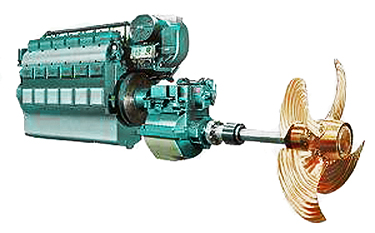The global marine propulsion market was valued at nearly US$ 12 Bn in 2017 and is anticipated to expand at a CAGR of more than 4.0% from 2018 to 2026, according to a new report titled “Marine Propulsion Market – Global Industry Analysis, Size, Share, Growth, Trends, and Forecast, 2017–2026” by Transparency Market Research (TMR). The global shipping industry is highly dependent on marine vessels for inland/cross-border trade activities. Currently, more than 50% of operational marine fleet utilizes diesel-based propulsion systems. However, shift toward clean energy and hybrid solutions is expected to hamper the demand for diesel-based propulsion systems in the near future.
Increase in demand for retrofit of existing marine fleets
Retrofits activities relate to existing marine fleets that are outdated as per the current norms and regulations imposed by governments of various countries. This provides ample opportunities for the deployment of more efficient marine propulsion systems for voyage. Several countries in Europe are shifting toward the production of renewable energy.
Request PDF Brochure –
https://www.transparencymarketresearch.com/sample/sample.php?flag=covid19&rep_id=43946
This has paved the way for the adoption of clean technology systems, such as marine hybrid/renewable propulsion systems, in the existing marine fleet. Interest in battery hybrid installations for new buildings and retrofits has increased significantly of late. The marine industry is increasingly investing in technologies that improve fuel efficiency, adhere to new environmental regulations, and help lower harmful emissions. Thus, retrofit of the existing marine fleet is anticipated to boost investments in the marine propulsion systems business.
REQUEST FOR COVID19 IMPACT ANALYSIS –
https://www.transparencymarketresearch.com/sample/sample.php?flag=covid19&rep_id=43946
Stringent regulations related to marine fuel emissions and spillage
Various maritime monitoring satellites also help detect oil spillage and excess carbon emissions from ferries, tugboats, OSVs, and defense vessels. Governments of the U.S. and Canada are strictly monitoring airborne emissions from ships and other vessel carriers in the ECAs. Several associations that actively monitor carbon emissions and oil spillage in the marine ecosystem include The U.S. National Oceanic and Atmospheric Association (NOAA) and The U.S. Department of the Interior’s Bureau of Ocean Energy Management (BOEM).
More Trending Reports by Transparency Market Research –
Diesel propulsion dominates the global marine propulsion market; however, its share is expected to decline
In terms of propulsion type, the diesel segment dominated the global marine propulsion market with around 50% market share in 2017. However, demand for alternate propulsion solutions such as renewable and hybrid based propulsion systems is anticipated to rise during the forecast period. Growth in renewable and hybrid propulsion systems is ascribed to the increase in concerns of efficient systems coupled with implementation of stringent governmental regulations related to marine fuel emission and oil spillage. Marine hybrid and renewable fuel (solar & wind) based propulsion systems are gaining momentum, as developed and developing countries are beginning to shift from high carbon emission based systems to low or carbon-emission free systems.
Marine vessels operating in coastal waterways remain dominant compared to vessels operating in inland waterways
Coastal/cross-border waterways are vessels operating in oceans. They are widely utilized for cross-border seaborne trade activities. Based on transport, the coastal/cross-border segment dominated the global marine propulsion market in 2017. This trend is anticipated to continue during the forecast period. Marine vessels operating in the coastal waters are utilized for seaborne trade activities.
Countries in Asia Pacific, especially China, to lead marine propulsion market
Registered fleets operating in coastal waters in Asia Pacific are high in numbers and dead weight tons (DWT) compared to that in other regions. Asia Pacific held major share of the global marine propulsion market in 2017. The registered marine fleet stood at more than 4,500 in China in 2016. Majority of these vessels use diesel based marine propulsion systems for voyage. However, the country’s shift toward cleaner energy is estimated to drive the demand for hybrid marine propulsion engines in the near future. Singapore and Indonesia are the key nations for marine transport in ASEAN in Asia Pacific. Singapore is known as an established center for ship repair in Asia Pacific. Over the years, the country has become a strategic center for maritime business. This is projected to boost the demand for marine propulsion systems in Singapore in the near future.
Highly competitive market with domination of top players
The global marine propulsion market is a highly competitive. Leading players dominate the market. In terms of market share, MAN Diesel & Turbo SE dominated the marine propulsion market followed by Caterpillar Inc. in 2017. Other players operating in the market include Cummins Inc., AB Volvo Penta, BAE Systems, Wärtsilä Corporation, Rolls Royce Plc., Niigata Power Systems Co., Ltd., Fairbanks Morse Engine, Masson-Marine S.A.S., GE, STEYR MOTORS GmbH, and Torqeedo GmbH.
